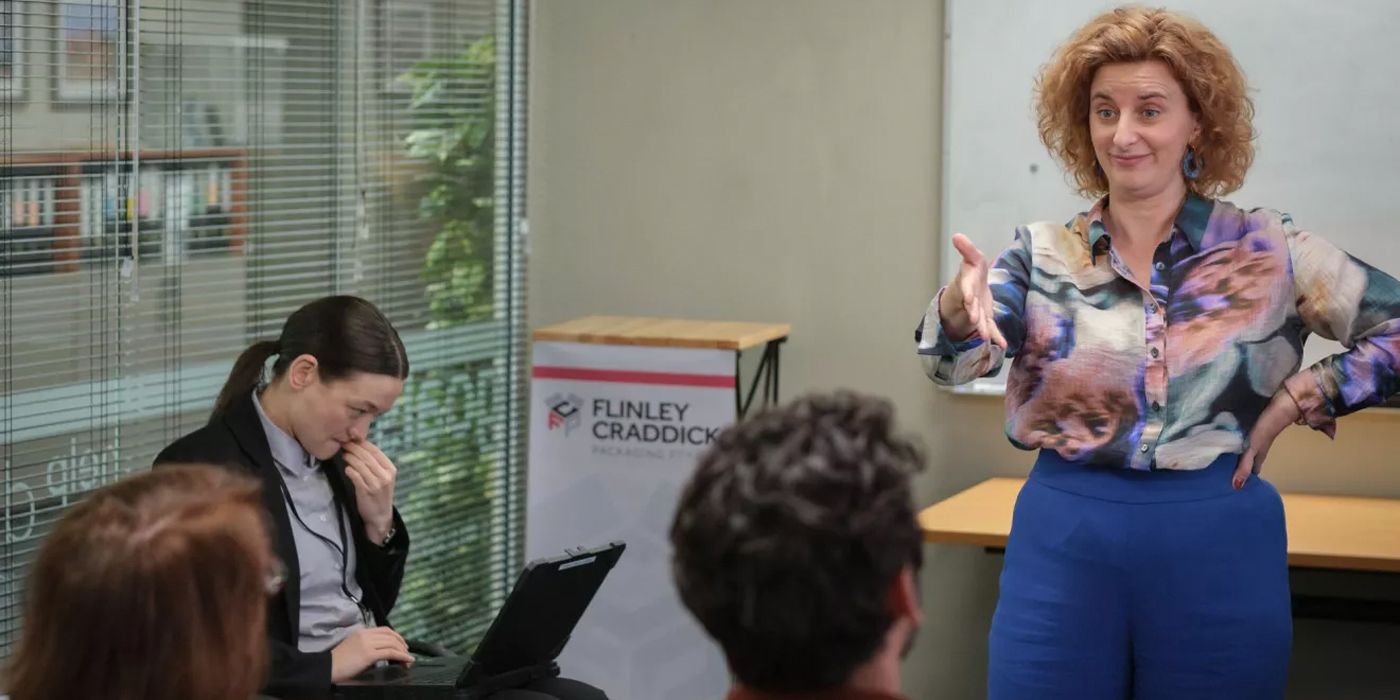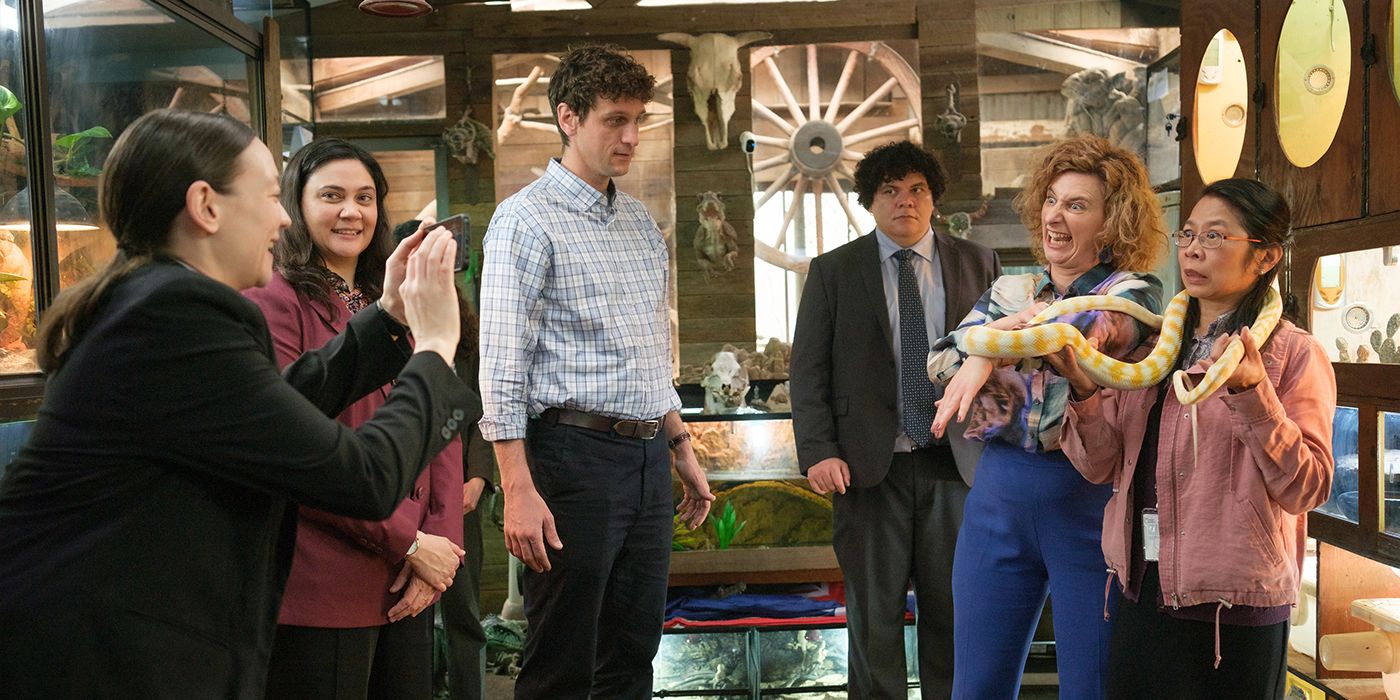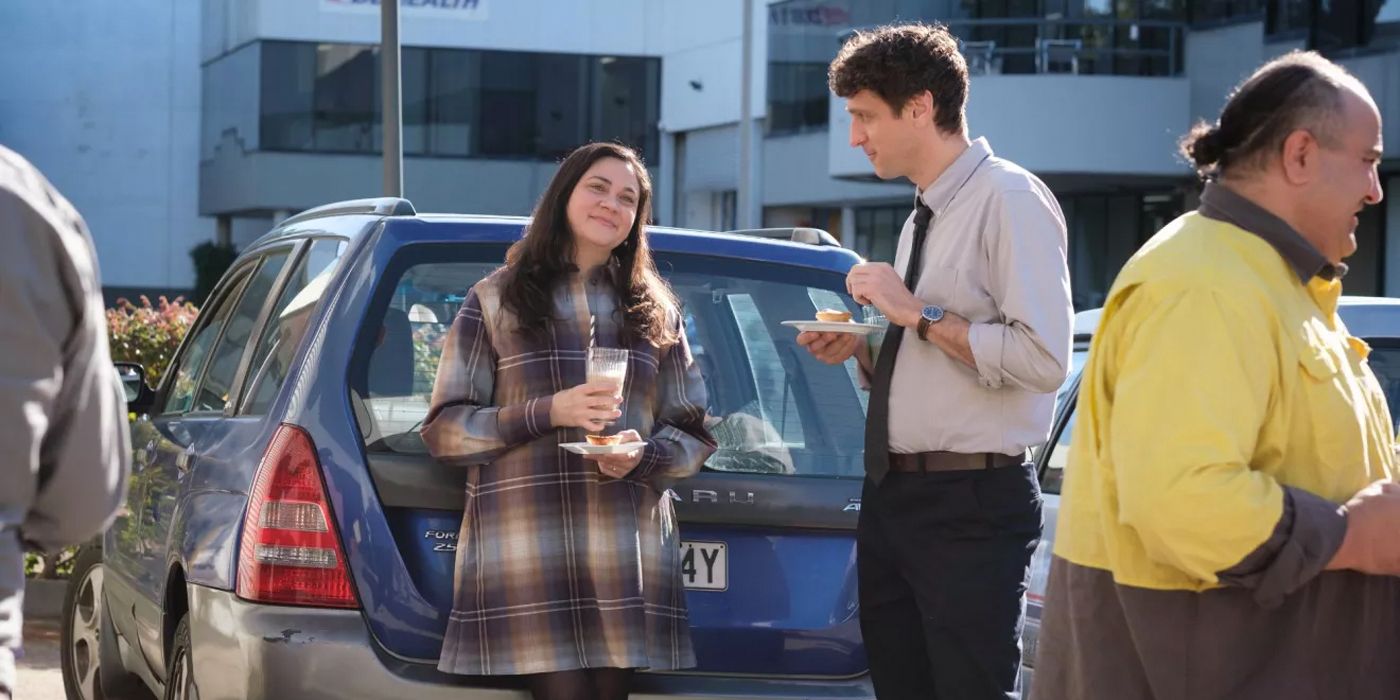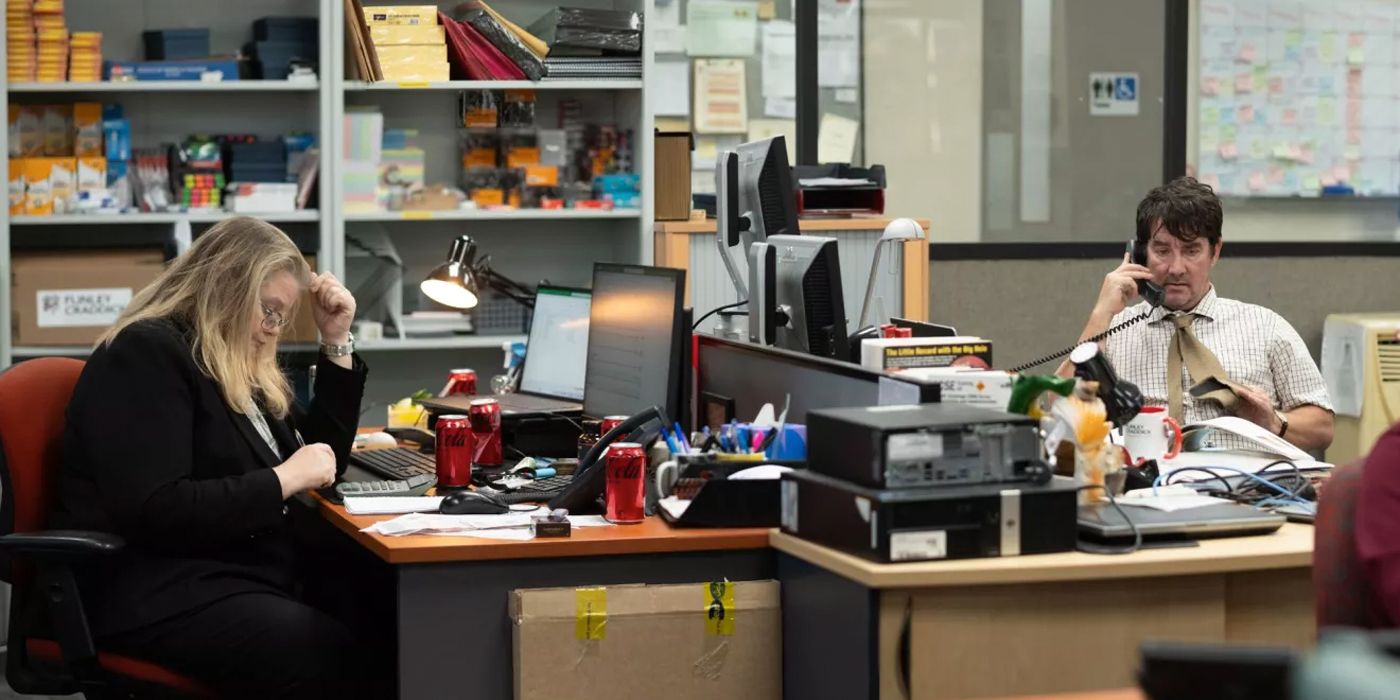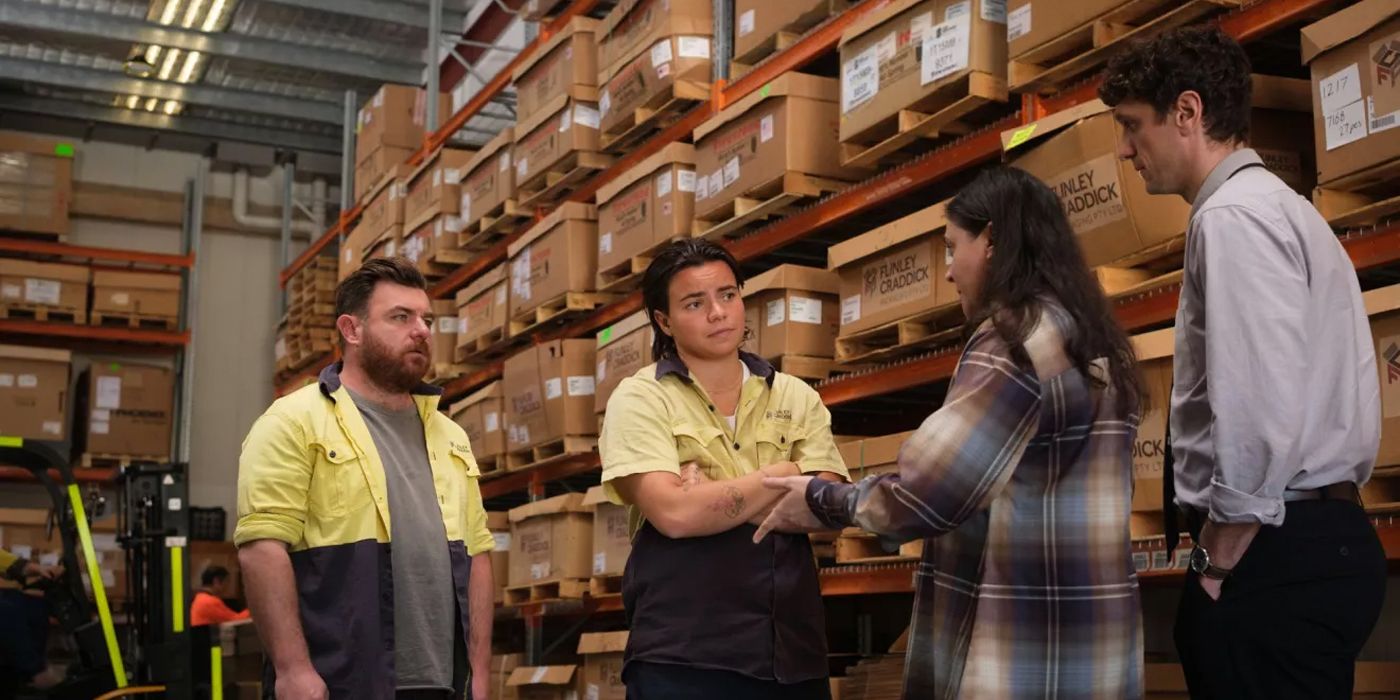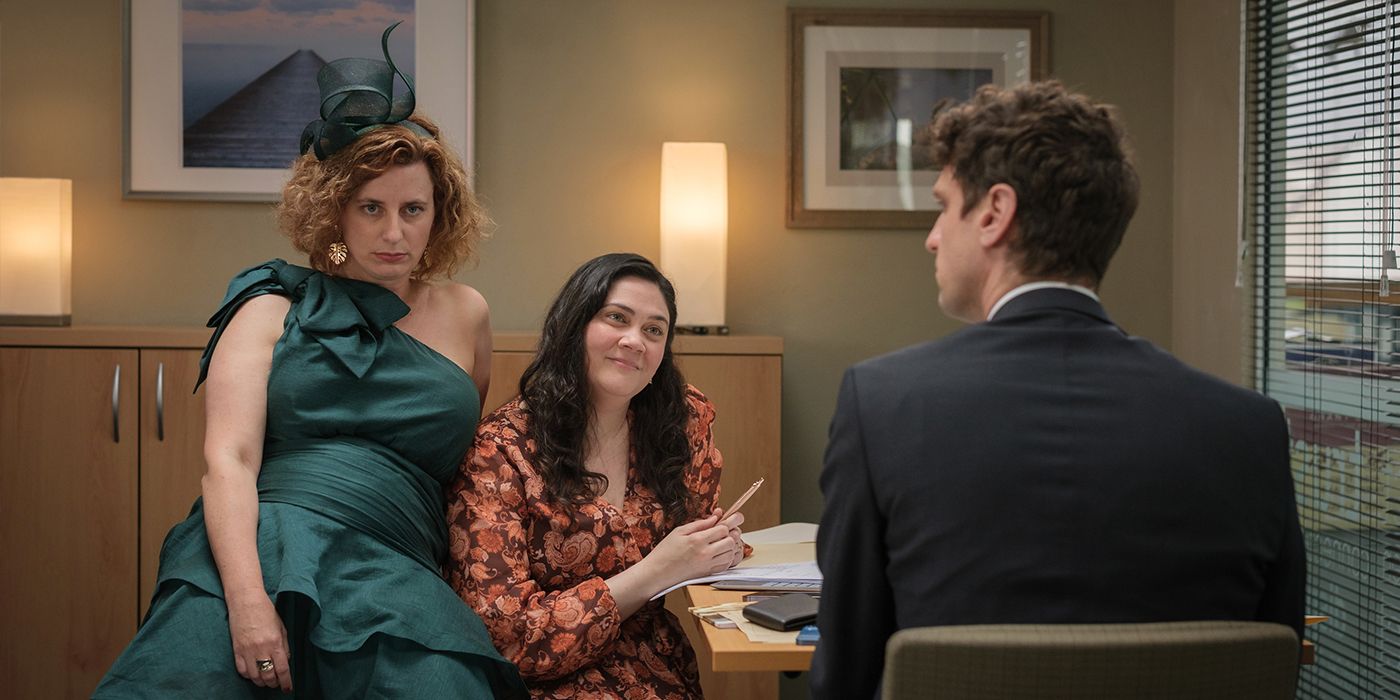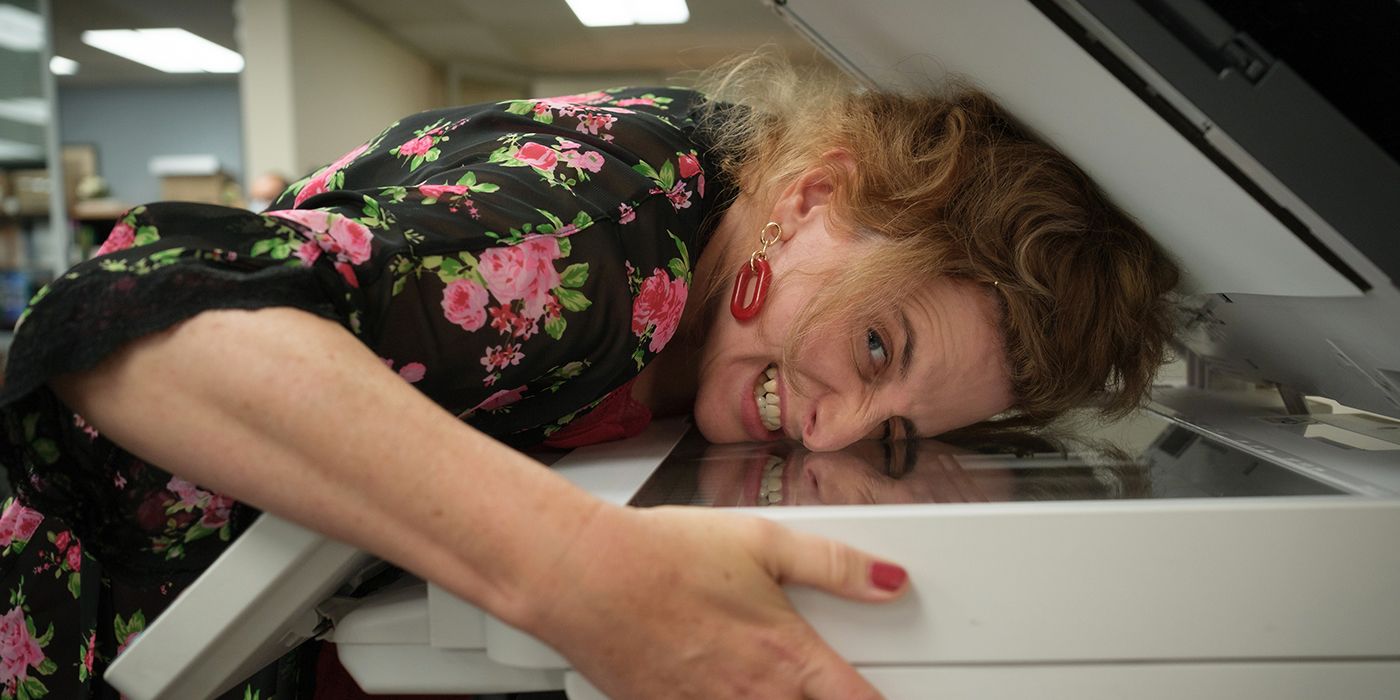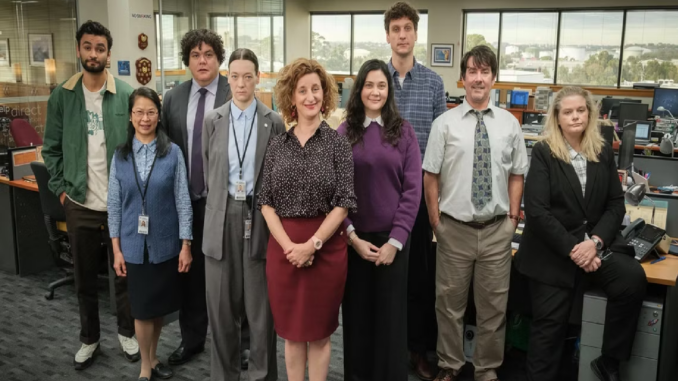
When you think of spin-offs, one of the most popular that comes to mind is naturally The Office. First spun from the BBC production of the same name by Ricky Gervais and Stephen Merchant, the workplace sitcom became a global staple, with audiences quickly latching on to its charm. Yet as it goes, the most beloved iteration remains the American version, with Steve Carell’s Michael Scott embodying a uniquely awkward, try-hard energy that echoes Gervais’ David Brent. Years after that series finale, the franchise has now landed in Australia and swaps the bumbling male boss for Hannah Howard (Felicity Ward), a regional manager with a distinct brand of misguided enthusiasm. Following the Prime Video series’ trailer debut, the thirteenth adaptation in The Office franchise received backlash online — some of it rooted in explicit sexism rather than any real flaw. But having reviewed the show’s rather hilarious first season, it’s exciting to see another iteration hit the right comedic beats while offering a sharp, playful look at office life.
From awkward glances into the camera to some very laugh-out-loud office pranks, the Australian version of The Office effectively blends nostalgia with cultural relevance to stand on its own. While the first episode is slower to kick off compared to its beloved predecessors, the following chapters genuinely work to build on the franchise’s legacy with some truly hilarious standout moments that capture the awkwardness of modern workspaces in a post-COVID world, including jokes about remote culture and amplifying productivity with standing desks. As the series works to build on the success of its U.S. version, it adds a refreshing twist to cringe comedy and expands on it, similarly to Abbott Elementary or Parks and Recreation, while being far from a failure.
What Is the Australian Version of ‘The Office’ About?
Australia’s The Office brings a refreshing, yet familiar chaos to the workplace comedy scene, with Ward’s Hannah Howard stepping into the shoes of Flinley Craddick’s very awkward managing director. As the boss of a small packaging company on the brink of being shut down, Hannah’s desperate to keep her office running despite orders to switch everyone to remote. Her solution? Force the entire staff to come in full-time, lock the doors during meetings so they can’t leave, and introduce absurd productivity goals, like hitting $300K in sales — but also because corporate can then warrant its opening.
As a show that goes by quickly and is expertly paced with its gags, The Office’s quirky and appreciated charm kicks in right away when Lizze Moyle (Edith Poor), Hannah’s productivity-obsessed “assistant” (who is every bit the Dwight Schrute as you would imagine), removes all the chairs to introduce standing desks while bringing along her pet crow, Russell — an unemotional support animal — to torment co-workers like Nick Fletcher (Steen Raskopoulos), who’s genuinely afraid of it. Lizze and Nick are this side of the world’s Dwight and Jim Halpert, not just the perfect blend of playful rivalry but also sharing a reluctant friendship. Naturally, where there is a Jim, there is also a Pam Beesley-type sales representative, Greta King (Shari Sebbens). She holds a little more confidence than her American counterpart and isn’t as shy, but they are, in essence, the same, as she’s also in a bad relationship with her childhood sweetheart.
Joining the hodgepodge of characters is also the team’s human resources manager, Martin Katavake (Josh Thomson), who has more of a spine than Toby Flenderson but the pretentiousness of Oscar Nuñez. Constantly annoyed by Hannah, he keeps to himself a lot of the time, but his uppity nature does create some funny situations. One of the funniest characters might just be Flinley Craddick’s IT rep, Lloyd Kneath (Jonny Brugh), who has some of the most outlandish scenes and silliest dialogue. It’s hard to say if he’s a mix between Kevin Malone and Andy Bernard, but he adds strong comic relief to the dynamics at work even when he doesn’t mean to. With peculiar quirks and a persona reminiscent of the office weirdo, he struggles to fit in, fumbling through everything from ancestry revelations to stapling his pants when his privates accidentally pop out.
Australia’s Version of ‘The Office’ Finds Humor in Nuance
As someone who is both a die-hard fan of The Office and a lover of the American version, nothing could ever come close. Naturally, when the trailer for Australia’s interpretation hit the web a little more than three weeks ago, it was, in a nutshell, pretty underwhelming. But the spin-off’s eight episodes are a sincerely refreshing surprise. Sure, the pilot is a bit of a slow start, but once those elements are established, things sail smoothly. Without spoiling the fun or surprises, the awkward comedy builds across episodes quite well and this wonderfully odd bunch works effortlessly within its environment. This change in pace and country adds a sharp nuance to the series, making it genuinely fun to watch things unravel. Hannah, much like her Office predecessors, veers between cringe-worthy jokes and heartfelt attempts to keep things together, including putting a huge chunk of her life on the line just to keep their office afloat. These fine details of the characters build the series into its own specific riff on a classic while offering something entirely new.
Best of all, this version of The Office never takes away from the original shows or its iconic gags. We don’t get the Australian equivalent of Jim putting Dwight’s stapler in vegemite here. Instead, we are welcomed to a new, refreshing comedy that reinvents the dynamics of these foundational characters through a diverse cast. There are no episodes that deal with sexual harassment lessons or a spin on the Dundie Awards, but there is a “Friday IRL” event and a pajama party that finds everyone in their most chill, laid-back PJs. There’s also a hilarious, rightfully LOL wake for a coworker that you have to see to believe. What makes the show so promising is how it pushes the envelope on absurdism — like the chaotic truth-or-dare sessions or the laughter-filled “Jesus on toast” moment that elevates the characters’ dynamics into more bedlam.
As each episode throws in wild twists and furthers character combinations for comic relief, The Office also explores relatable modern-day workplace tensions that get elevated by its dynamic, mostly female-led cast. One of the joys of this Australian version is how multiple women in positions of power make decisions here, from Hannah to even the warehouse run by Stevie (Zoe Terakes), even if said decisions aren’t always the best. But that leadership grounds our common understanding of these characters. Through it all, Hannah’s insecurities about leadership and her struggle to maintain relevance call back to the heart of The Office franchise, which leans heavily on each character’s yearning for connection, fulfillment, and recognition in a space where silliness reigns.
Australia’s ‘The Office’ Deserves a Chance — Seriously
As the perfect blend of weird workplace shenanigans and subtle commentary on office politics in the remote-work era post-COVID, every episode of The Office gets progressively sharper. It also leans heavily on its own approach to humor through diverse dynamics in writing, acting, and direction from collaborators Julie De Fina and Jackie van Beek, the latter of whom is best known for the Jermaine Clement and Taika Waititi classic What We Do in the Shadows and its spinoff series, Wellington Paranormal. While the amazing cast sets the tone for the series, the show thrives because of women. When the initial reactions hit following the Prime Video trailer release, the comments were disheartening, particularly with regard to how an “attractive woman” playing the Dwight character made “no sense.” The idea that looks diminish strong, potent comedic value reveals not just a weak opinion but limits the way women are perceived in comedy, and reflects a lingering bias that is severely outdated.
Just as Rainn Wilson’s Dwight was hilarious because he subverted traditional male stereotypes with an awkward, rigid, and socially oblivious eccentricity, Poor’s character challenges outdated norms about women in leadership, while digging into how the best of them are also the weirdest. This version of The Office also does away with the toxic Kelly Kapoor-type traits or the wildly inappropriate Meredith Palmer, proving women don’t have to stem from male-centric norms that adhere to their version of funny. As this show and so many others led by women have proven, comedy isn’t dictated by gender. It’s always been about sharpening a specific perspective with delivery and timing. Best of all, Ward, in a performance that is electric and likable, shows Hannah can have the same amount of heart and humor as Michael or David and still get the job done. Dismissing the show simply because it’s another “Ghostbusters 2016” not only corners viewers into archaic assumptions but stifles creativity for a franchise this rich, preventing comedy from evolving into something more inclusive and nuanced.
When we let go of these rigid expectations that narrow our view of comedy, we open ourselves to humor that reflects diverse experiences through another type of lens — something The Office excels at. Across its episodes, the show is chaotic, funny, and oddly heartwarming in the best way. Thanks to its bizarre yet believable characters, this thirteenth iteration is a lot luckier than it thinks, capturing the same magic that made the original a hit — just with a refreshing Aussie twist.
